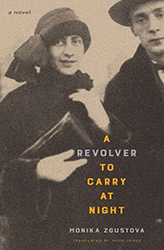One might wonder why an anthology of “women’s voices from the Gulag” might be important to read in the year 2020. Didn’t we all read Solzhenitsyn back in the day? Weren’t Stalin’s crimes condemned by the Russian government? What does this anthology of interviews with women who “survived” (a relative term) the gulags, really offer?
First, it addresses a notable gap in the history of the gulags — the absence of women’s accounts. Apart from Eugenia Ginzburg, her cellmate Julia Karepova, and a few others, women’s experiences are rarely mentioned. This anthology shifts the focus. Some women were sentenced to hard labor after malicious rumors by informants who were jealous of their apartments or apparent privileges. Others were punished for loving the wrong sort of man, maybe a foreigner or a married man with an unhappy wife. Many werepolitical dissidents. After prison and a perfunctory ‘trial,’ they’d be sent to distant prison camps, packed into freight trains for days on end with no provisions. Or they were sentenced to a sort of internal exile, forced to find their own transport to distant regions where they had to arrange their own job and lodgings.
Most of these women, at least Zgustova’s interviewees, had not been laborers or athletes in their former lives. Ill-prepared for any kind of physical labor, they had to log trees in the tundra, build stone walls or dig out frozen earth — all with very little tools, clothing, or food. It killed the weaker ones. Even worse was the utter futility of much of the work: they’d be forced to build a wall, then ordered to tear it down. They could not even pretend that their suffering served any useful purpose. It didn’t help that the often-sadistic overseers were actually other prisoners; almost everyone in the gulags was a prisoner.
How did they survive? Some found a friend in the camps who sustained their spirits. Some survived by memorizing and reciting poetry, making small drawings, or engaging with the stark aesthetics of the wildernesses they endured. More than one woman describes a Siberian shaman who treated them with folk remedies and spiritual solace. Some held onto life so they could reunite with a mother, fiancé, child, or sibling. Others became determined to survive so they could see their tormentors punished. But, most reached the point of doubting they would survive.
The survivors faced new challenges. After release, many were banned from living in the big cities, faced difficulties returning to their professions, and grieved friends they’d lost. Some married other gulag veterans, realizing these were the only people who truly understood what they’d endured. Yet, a surprising number of the women said the gulag experience gave their lives meaning. If you survived, it gave you armor, and everyone who hadn’t been through it seemed frivolous. As Ella Markman put it, “extreme suffering teaches you about yourself, about the people around you, and about human beings in general.”
This volume helps the rest of us understand these remarkable women, their important stories, and the dangers of the totalitarian state.
Bettina Berch, author of the recent biography, From Hester Street to Hollywood: The Life and Work of Anzia Yezierska, teaches part-time at the Borough of Manhattan Community College.





